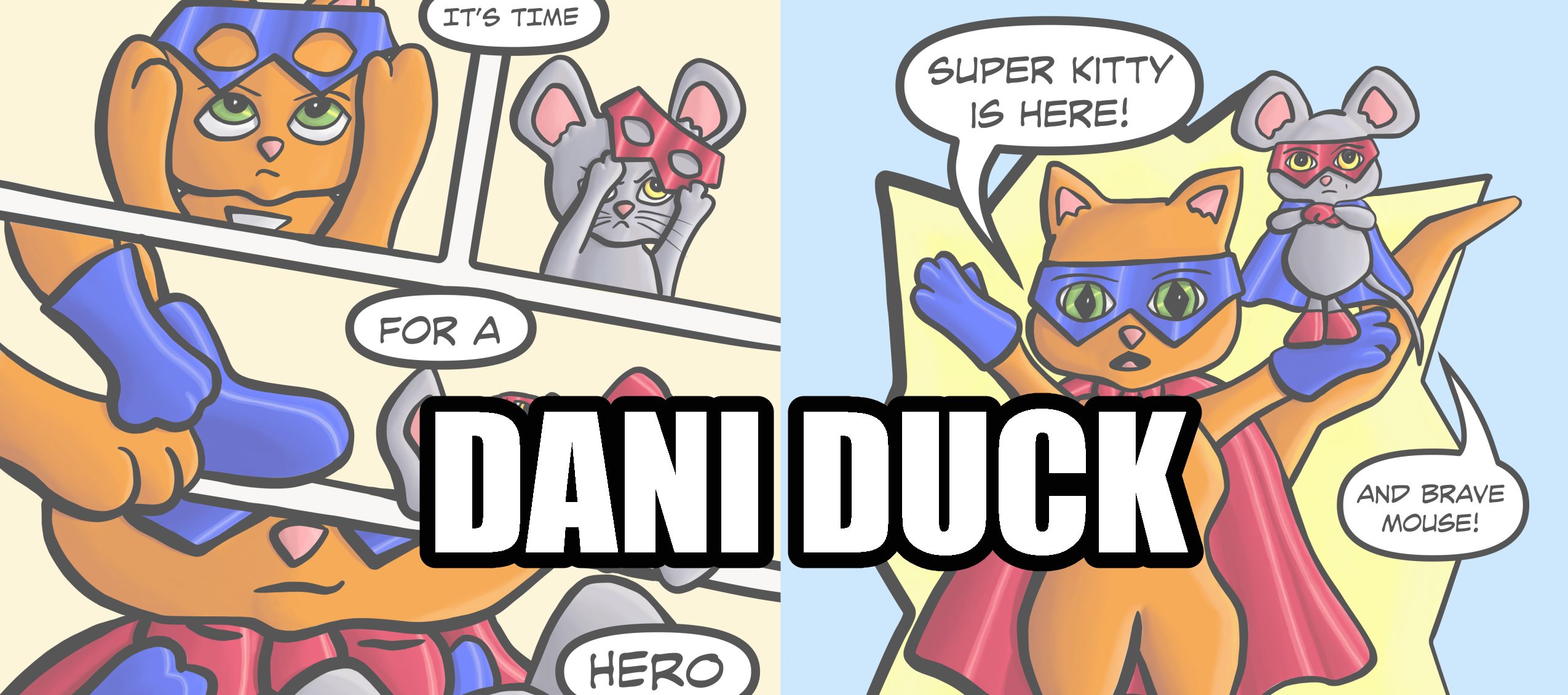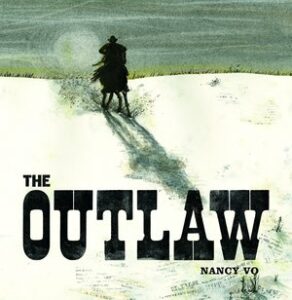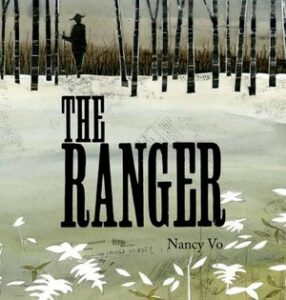Writing
-
Jennifer Ward: Avian Writer
May 27, 2019 /Jennifer Ward is the author of over 20 kids books including “Mama Built a Little Nest” and “Mama Dug a Little Den”. I was lucky enough to meet Jennifer at the Children’s Book Academy’s “The Craft and Business of Illustrating Picture Books”. Jennifer Ward was encouraged by her Illustrator Steve Jenkins to take the class and I’m so glad she did. She is an amazing illustrator and I can’t wait to see her illustrate some of her future books!
You can see more of Jennifer’s work on her website at: http://www.jenniferwardbooks.com
—–
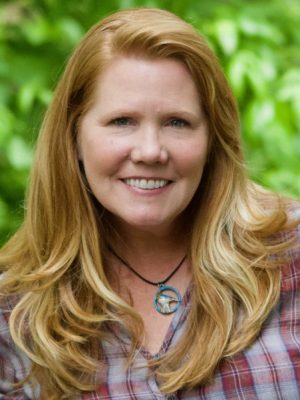
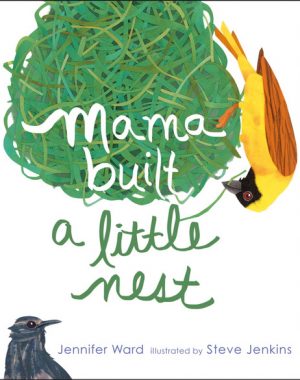
Dani Duck: How did your time as a teacher influence how you write now?
Jennifer Ward: I am a naturalist and have a degree in education with a minor in science. As a teacher, I used picture books to enhance all subject areas of curriculum, including science. Reading picture books daily helped me to “know” picture books. I found myself creating my own picture books to use with my students to share scientific concepts – expository nonfiction books that were simply made for classroom use when I couldn’t find books on the market with science concepts I wanted to convey. It’s exciting to see how the market of expository nonfiction has grown since my teaching days!
Dani: Which bird most represents who you are? Which bird would you like to be?
Jennifer Ward: Hmmm. Perhaps a Carolina Wren represents my personality – they are SO curious about everything around them, and so am I. If I had to be a bird, I think I’d choose to be an American Crow. They’re family oriented, with multiple generations living together year after year, intelligent, and have a more varied diet than most bug-eating songbirds!
Dani: What is the most fun you’ve ever had writing?
Jennifer Ward:The most fun I have writing is when I experience that “aha!” moment. You know, that epiphany moment when the right words surface to make something work – such as the perfect ending to a story. Writing isn’t always like that, so it’s always a “rush”, or fun, when it all comes together as I envisioned.
Dani: Why is STEM so important?
Jennifer Ward: It’s important that we provide students authentic opportunities to explore, wonder, question, create, problem solve and practice STEM (science, technology, engineering and math), that they may pursue careers related to STEM. As our world becomes more populated and natural resources decrease, I believe the health and vitality of our planet and its populations will depend on creative and innovative STEM focused minds.
Dani: What’s one thing you wish everyone knew about writing?
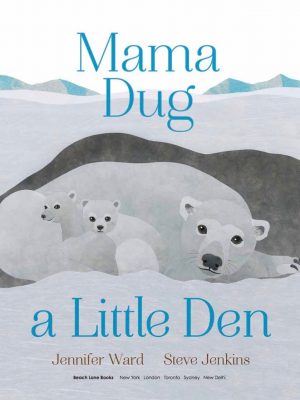
Jennifer Ward: Writing involves A LOT of thinking, and sometimes thinking is hard – especially when you’re trying to make a picture book story. Sometimes a story works. Sometimes it doesn’t. Some picture books may happen quickly; some may take years. Writing is truly a process, and a creative one.
—–
Follow Jennifer:
Website: http://www.jenniferwardbooks.com
Twitter: https://twitter.com/jenwardbooks
Momma Built a Little Nest: http://www.jenniferwardbooks.com/nest.html
Momma Dug a Little Den: http://www.jenniferwardbooks.com/den.html
More of Jennifer Ward’s Books: http://www.jenniferwardbooks.com/books.html
-
Jennifer Cole Judd’s Train to Creativity
May 24, 2019 /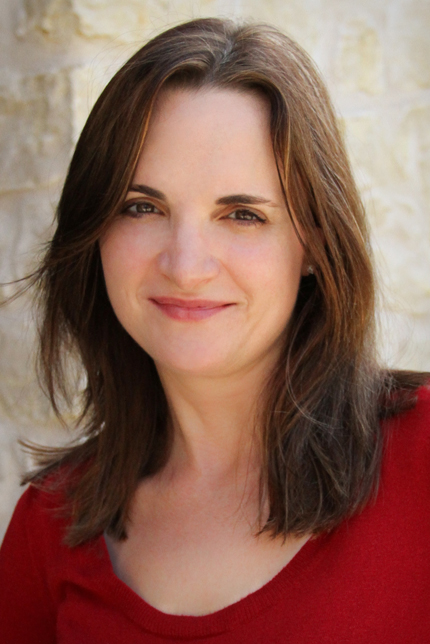
I love Jennifer Cole Judd’s work so much! I’m so glad that I get to have her on my blog once again. Years ago I received a copy of Circus Train from her. You might be looking at the cover and think “Is this book actually as beautiful as it looks?” Yes, yes it is, both words and pictures are absolutely wonderful.
Jennifer talks a lot about creativity, writing tips and all kinds of fun things! I hope this interview keeps you smiling as you go into the weekend.
Jennifer Cole Judd’s Website: http://jennifercolejudd.com/
—–
Dani: What do you do when you aren’t feeling so creative?Jennifer: Creativity sometimes feels like a magical fairy or leprechaun. As soon as I decide that I *need* to be creative, that little muse backflips into a pile of laundry, or emails, or errands, (or Facebook posts and Acorn TV shows) and *poof*! She’s gone. For a looooong time.
However, there are a few things that help me find my creativity again.First, I cannot recommend Julia Cameron’s THE ARTIST’S WAY enough for a serious study in cultivating creativity. It’s a must-read for anyone pursuing a creative field. Cameron advocates writing “morning pages” each day (where you fill up three pages of brain noise–complete rush-write nonsense–to clear your brain clutter and unblock your creativity).I recommend grabbing a copy of this book, and a blank notebook, and see what happens when you dump all of the worries and distractions from your mind onto the page. It sounds easier than it is! But getting all of that out gives you room to breathe creatively.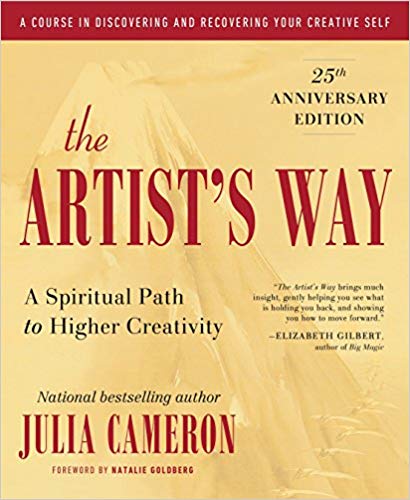
The other thing that helps me is to take my creativity OFF the page (or the screen). These are what I like to call “creativity breaks,” and they really help get the juices flowin’ again, so to speak. A creativity break could look a little like this:
1) Taking a walk, and counting how many different animals I find
2) Going to a grocery store and buying 3-4 foods I have never tried (or a bunch of random ingredients to make into a recipe)
3) Using a different medium, like clay, finger paints, etc., to get messy with and start exploring,
4) Holding a “Sensory Spa Session” with lots of scents, textures, tastes, pictures with multiple visual elements, music clips, etc.
5) Playing games, especially with my kids (try the classics, like charades, “Would You Rather,” “I Spy,” and 20 Questions for inspiration).
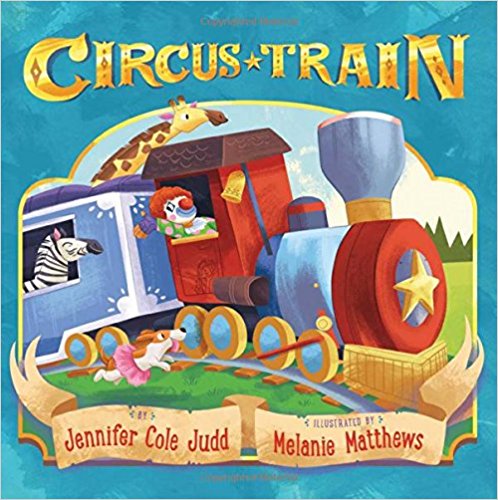 Dani: What is your favorite animal?Jennifer: I love way too many animals. Aside from my pets, I love puffins, horses, chinchillas, any chubby bird, and sloths (though I may not love sloths quite as much as Kristen Bell, but puffins would definitely send me into paroxysms of joy 😀 )Dani: Do you use illustration notes? Why or why not?Jennifer: I do use them, but I try to use them very sparingly. (I didn’t have any for Circus Train, for example.) I think a well-placed art note helps convey to an editor and illustrator your vision without going overboard on description or direction. An illustrator can do a much more amazing job bringing my words to life with her vision without me getting in the way, but there are some instances when an art note can add a little bit of insight.)Dani: Where do you go for inspiration?The library, for sure. I’m a little bit of an addict, admittedly. I’ve been known to stagger out of the library dragging sacks of books behind me.Dani: What’s the most fun you’ve ever had writing?Jennifer: This is hard! I love writing when you hit the zone and it just feels like words and ideas are flying out of your fingers like magical sparks. I do think one of the most meaningful and inspiring (and fun!) experiences I’ve had was when I collaborated with my critique group to write An Eyeball in My Garden. I made lifelong friends on that project and really got an appreciation for the good mojo that comes from a positive collaborative effort. It was pure joy to work on that project.
Dani: What is your favorite animal?Jennifer: I love way too many animals. Aside from my pets, I love puffins, horses, chinchillas, any chubby bird, and sloths (though I may not love sloths quite as much as Kristen Bell, but puffins would definitely send me into paroxysms of joy 😀 )Dani: Do you use illustration notes? Why or why not?Jennifer: I do use them, but I try to use them very sparingly. (I didn’t have any for Circus Train, for example.) I think a well-placed art note helps convey to an editor and illustrator your vision without going overboard on description or direction. An illustrator can do a much more amazing job bringing my words to life with her vision without me getting in the way, but there are some instances when an art note can add a little bit of insight.)Dani: Where do you go for inspiration?The library, for sure. I’m a little bit of an addict, admittedly. I’ve been known to stagger out of the library dragging sacks of books behind me.Dani: What’s the most fun you’ve ever had writing?Jennifer: This is hard! I love writing when you hit the zone and it just feels like words and ideas are flying out of your fingers like magical sparks. I do think one of the most meaningful and inspiring (and fun!) experiences I’ve had was when I collaborated with my critique group to write An Eyeball in My Garden. I made lifelong friends on that project and really got an appreciation for the good mojo that comes from a positive collaborative effort. It was pure joy to work on that project.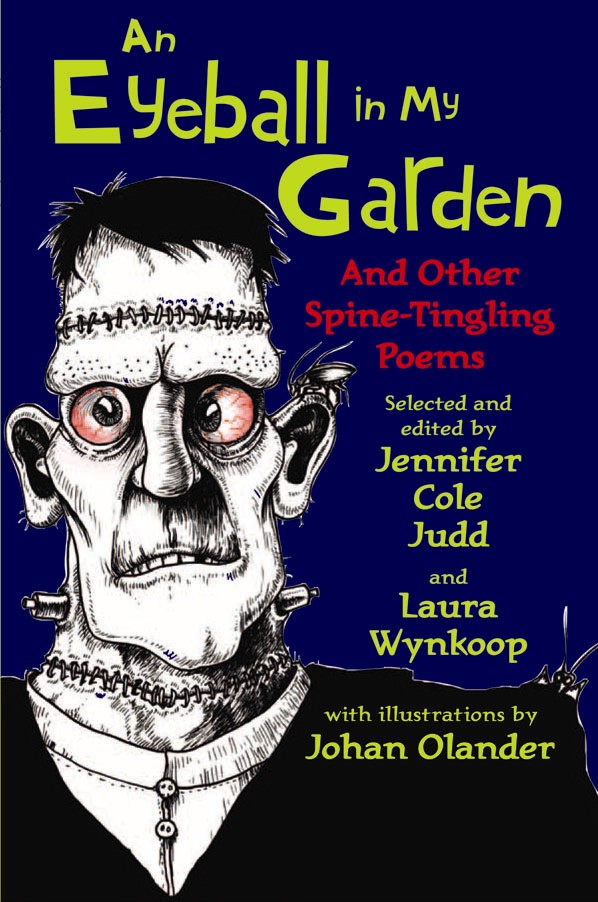
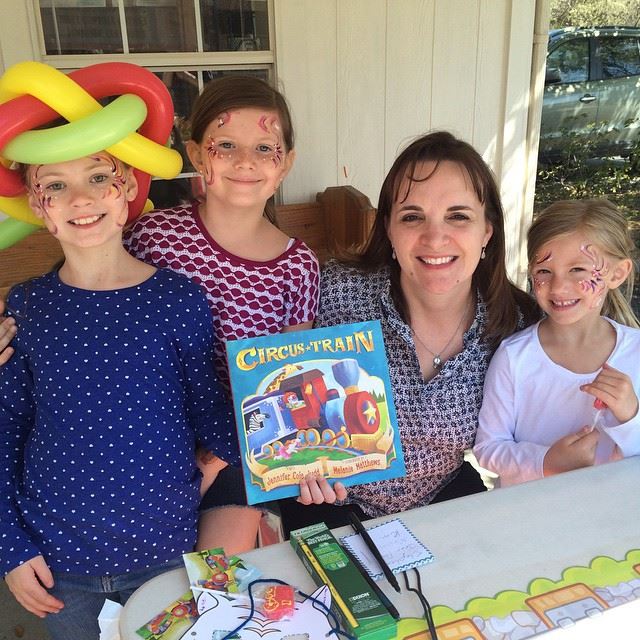
Follow Jennifer:
Website: http://jennifercolejudd.com/
Twitter: https://twitter.com/jennifercjudd
Facebook: https://www.facebook.com/jennifercolejuddbooks
Goodreads: https://www.goodreads.com/author/show/3448156.Jennifer_Cole_Judd
Jennifer’s Books: https://www.amazon.com/Jennifer-Cole-Judd/e/B003YYQAGC
-
Robin Martin Inspires Magic
May 22, 2019 /Robin Martin is a fantastic writer with so much heart! I’ve known Robin through Facebook for a while now and she’s incredibly supportive and caring. Though she may say that she hasn’t gotten that “brass ring” yet I’m impressed with all Robin’s accomplishments. She has achieved that brass ring, though it might not look like the ring she expected! I love Robin’s posts and was so glad that I could interview her and learn more about her process!
You can find more information about Robin and her books here: http://sbpra.com/robinmartin-duttmann/
—–
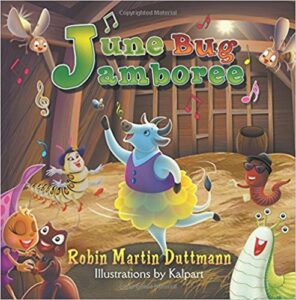
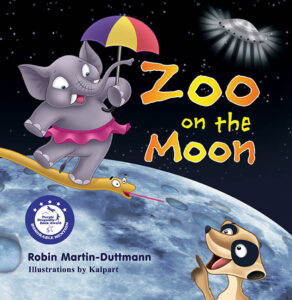 Dani: How did you start with picture book writing?Robin: As a child I always kept a journal. As an adult I was a voracious reader, but the art of writing had eluded me. It wasn’t until I had children of my own that I started reading to them, and in my mind rewriting the endings. Sometimes I would make up stories for my children. My mother encouraged me to put to paper all of my crazy thoughts. One day I read to her a story about a Zoo on the Moon. She laughed and said I had actually written down her reoccurring childhood dream about animals from earth on the moon. In 2013 I published Zoo on the Moon with SPBRA, a hybrid press. It’s not one of the traditional press houses, and not self publication. I like to think of it as a great alternative while I wait for the brass ring, and establish myself within the KidLit Community. In 2015 Zoo on the Moon was selected for primary science in 147 countries at BEA.Dani: What’s the most fun thing you’ve ever written?Robin: The most fun thing I have written that has been published is called June Bug Jamboree. It has a singsong feel to it. “Potatoe bug drank a mug of the best moonshine there be. He asked to dance with the fancy ants, there was one but he saw three!” It was a little risky, but I thought Disney does it all the time – scattering a little adult humor into the story, and let’s face it, it’s typically adults who are doing the reading at this age. I decided to have a little fun with it.Dani: Who inspires you?Robin: There are many within the industry who are my Facebook friends that I look up to and who I turn to when I have questions about my writing, or when I just need a second opinion. I believe you’ve been gracious enough to direct my path a time or five. Lol. But truly one of my biggest supporters other than family is a woman named Pam Goldstein. We co-chair www.WindsorInternationalWriters.
Dani: How did you start with picture book writing?Robin: As a child I always kept a journal. As an adult I was a voracious reader, but the art of writing had eluded me. It wasn’t until I had children of my own that I started reading to them, and in my mind rewriting the endings. Sometimes I would make up stories for my children. My mother encouraged me to put to paper all of my crazy thoughts. One day I read to her a story about a Zoo on the Moon. She laughed and said I had actually written down her reoccurring childhood dream about animals from earth on the moon. In 2013 I published Zoo on the Moon with SPBRA, a hybrid press. It’s not one of the traditional press houses, and not self publication. I like to think of it as a great alternative while I wait for the brass ring, and establish myself within the KidLit Community. In 2015 Zoo on the Moon was selected for primary science in 147 countries at BEA.Dani: What’s the most fun thing you’ve ever written?Robin: The most fun thing I have written that has been published is called June Bug Jamboree. It has a singsong feel to it. “Potatoe bug drank a mug of the best moonshine there be. He asked to dance with the fancy ants, there was one but he saw three!” It was a little risky, but I thought Disney does it all the time – scattering a little adult humor into the story, and let’s face it, it’s typically adults who are doing the reading at this age. I decided to have a little fun with it.Dani: Who inspires you?Robin: There are many within the industry who are my Facebook friends that I look up to and who I turn to when I have questions about my writing, or when I just need a second opinion. I believe you’ve been gracious enough to direct my path a time or five. Lol. But truly one of my biggest supporters other than family is a woman named Pam Goldstein. We co-chair www.WindsorInternationalWriters.com. She has invested in me by making me the director of the children’s programs, and buying me a classroom at SHO, a local Arts community. She even nominated me for volunteer of the year award for Children’s literacy last year from the Canadian Government, an award I gladly accepted.  Dani: Do you have any advice for struggling writers?Robin: Write because you love it. Submit it because you want to share it. And grow a thick skin as you hear many more nos than yeses….. Hmmm how do you spell nos and yeses?
Dani: Do you have any advice for struggling writers?Robin: Write because you love it. Submit it because you want to share it. And grow a thick skin as you hear many more nos than yeses….. Hmmm how do you spell nos and yeses?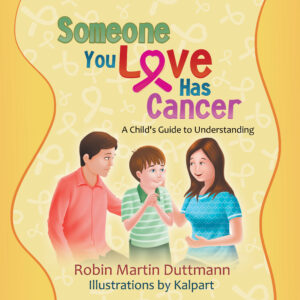 Dani: What’s the most important book you’ve written?Robin: Three years ago I was diagnosed with Triple Negative Breast Cancer, a rare sub-type with low prognosis of survival and a very high rate of re-occurrence. I decided that parents and teachers needed a way to talk to children about cancer in a gentle but factual way, so I wrote Someone You Love Has Cancer- A Child’s Guide to Understanding. It won an award at the Purple Dragonfly Book Awards of Arizona in 2018. As of the time of this post it’s been on Amazon’s Best Sellers -top 100 list for two weeks now. This is the book of which I am most proud. The illustrations are amazing as well, done by Kalpa Joshi of Kalpart. She is an award winning illustrator from India.My next project was written in conjunction with 1000 authors from all over the world called 1000 Ripple Effects. It’s a mental health book aimed at children ages 12-24. Look for it on Amazon soon!Thank you so much for inviting me to interview. Many wishes for writing success to all, Robin Martin Duttmann—–
Dani: What’s the most important book you’ve written?Robin: Three years ago I was diagnosed with Triple Negative Breast Cancer, a rare sub-type with low prognosis of survival and a very high rate of re-occurrence. I decided that parents and teachers needed a way to talk to children about cancer in a gentle but factual way, so I wrote Someone You Love Has Cancer- A Child’s Guide to Understanding. It won an award at the Purple Dragonfly Book Awards of Arizona in 2018. As of the time of this post it’s been on Amazon’s Best Sellers -top 100 list for two weeks now. This is the book of which I am most proud. The illustrations are amazing as well, done by Kalpa Joshi of Kalpart. She is an award winning illustrator from India.My next project was written in conjunction with 1000 authors from all over the world called 1000 Ripple Effects. It’s a mental health book aimed at children ages 12-24. Look for it on Amazon soon!Thank you so much for inviting me to interview. Many wishes for writing success to all, Robin Martin Duttmann—–Follow Robin:
Website and Books: http://sbpra.com/robinmartin-duttmann/
Twitter: https://twitter.com/RobinZimmerman7
-
Wondrous Witch Ksenia Anske
May 20, 2019 /Ksenia Anske is like a wonderful wild witch that probably wouldn’t eat your face. She brings a dark beauty to the world of fantasy. Ksenia is an author who truly cares about her audience. She takes the time and effort to talk to and know the people who read her books. On top of that she wants other writers to succeed. It’s no wonder why she’s so beloved.
Ksenia’s books: https://www.kseniaanske.com/

Photo & hair by Deanna Teasley Dani: What led you to becoming an author?Ksenia: Writing pulled me out of depression. At my therapist’s urging, I began journaling. At first I did it privately, on paper, then I started a blog and wrote publicly about my process of recovery. Then I started tweeting little writing tips that kept me going, and soon my followers and readers asked me to make a book of those little tweets, which became my first self-published book, Blue Sparrow. A trilogy followed, Siren Suicides, a story about a teenager committing suicide. Then my bestseller Rosehead. I didn’t think about becoming an author while I wrote those books. I was happy to stay afloat and not slide back into darkness. By the time I figured out I was an author, I think I was on my fourth book, and it hit me that it was true. “I’m writing books,” I thought. “I guess I’m an author.” Dani: If you weren’t a writer, then what would you be?Ksenia: A dancer. My latest book TUBE (coming out end of 2019) is about a Russian ballerina confronting the ghosts of her dead family while on the train. At one point, when writing it, I thought, “Why am I writing about a ballerina? Is my mind trying to tell me something?” And yes, it was. I’d dreamed of being a dancer when I was little, yet somehow that dream got lost as I grew up and got busy with life. So last year in October I started taking ballet classes, and I’ve been going six times a week now since January (only missed a class once). So yes, a dancer for sure.Dani: How do you refill your creative well?I read. I loved reading as a child, and I still love reading above everything else. It’s what brought me to writing, I think. My love of reading. Books were my teachers. I remember thinking, “I can learn anything from books!” That was such freedom, such certainty. My books were always there for me. They never told me they didn’t have time for me. They could be next to me when I felt lonely. And they held so much wisdom, and so much beauty…even now still, when I read, I quite often cry simply because the writing is so good, it moves me.
Dani: If you weren’t a writer, then what would you be?Ksenia: A dancer. My latest book TUBE (coming out end of 2019) is about a Russian ballerina confronting the ghosts of her dead family while on the train. At one point, when writing it, I thought, “Why am I writing about a ballerina? Is my mind trying to tell me something?” And yes, it was. I’d dreamed of being a dancer when I was little, yet somehow that dream got lost as I grew up and got busy with life. So last year in October I started taking ballet classes, and I’ve been going six times a week now since January (only missed a class once). So yes, a dancer for sure.Dani: How do you refill your creative well?I read. I loved reading as a child, and I still love reading above everything else. It’s what brought me to writing, I think. My love of reading. Books were my teachers. I remember thinking, “I can learn anything from books!” That was such freedom, such certainty. My books were always there for me. They never told me they didn’t have time for me. They could be next to me when I felt lonely. And they held so much wisdom, and so much beauty…even now still, when I read, I quite often cry simply because the writing is so good, it moves me. Dani: What do you do for fun?Ksenia: Dance! And read. And write. I guess all these things I do every day are so much fun, sometimes I pinch myself, not believing I’m living it, scared of waking up and finding all this fun gone (haven’t woken up yet).Dani: Do you have a quick writing tip you can share with us?
Dani: What do you do for fun?Ksenia: Dance! And read. And write. I guess all these things I do every day are so much fun, sometimes I pinch myself, not believing I’m living it, scared of waking up and finding all this fun gone (haven’t woken up yet).Dani: Do you have a quick writing tip you can share with us?Ksenia: You alone know how to write your book. Yes, there are smart books on writing and plotting and character development and style, and everything else you think you need to read and study before you begin. You don’t need any of it. What you need is trust. Trust that you already know your story and how to write it. Trust that while you do it, you’ll find your way. Trust that you’ll come out the other end knowing just a little more about yourself and ready to begin again. The journey is yours and yours only. People who have been there can point you the way, yet you’re the one who will have to walk it. So walk it. Don’t be afraid. In your gut you already know where you’re going, don’t you?
—–Follow Ksenia:
Website/Books: https://www.kseniaanske.com/
Patreon: https://www.patreon.com/kseniaanske
Twitter: https://twitter.com/kseniaanske
Instagram: https://www.instagram.com/kseniaanske/
You can get a free copy of Ksenia’s short stories on her website!
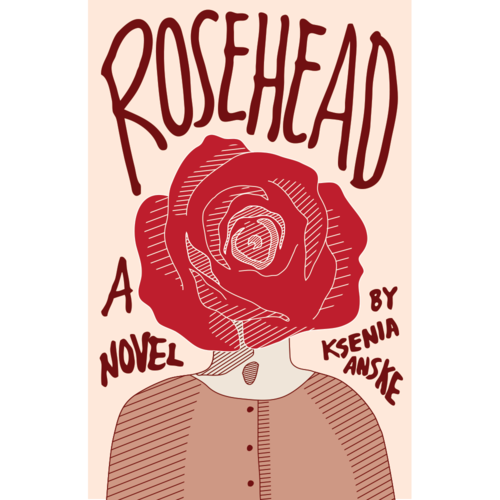

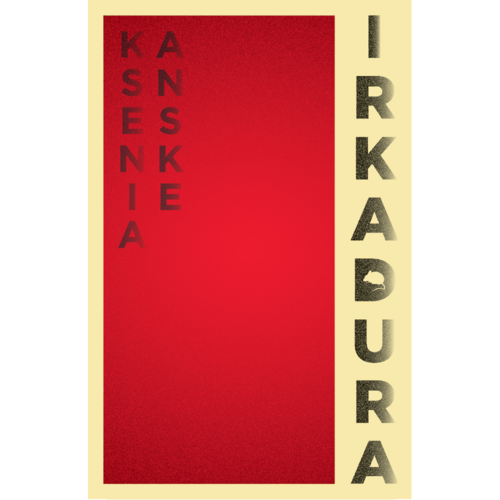
-
Making Magic with Rebecca Fyfe
May 17, 2019 /
copyright Slimming World/PAUL BULLER I could be wrong, but I believe I met Rebecca Fyfe through her Chapter Book Challenge (or ChaBooCha). This is an event in March which Rebecca created to help writers write chapter books for young readers! There are prizes and a lot of great guests. I look forward to this event every year. I wasn’t able to finish my book last year, but this year I got just over my word count! It was all thanks to Rebecca and all of her efforts!
Check out the event and don’t forget to sign up to get emails for the next Chapter Book Challenge: http://chapterbookchallenge.blogspot.com/
—–
Writing Stories is Creating Magic
by Rebecca Fyfe
I’ve realized that I am a wizard and the pen is my wand. You see, when I write a story, I often have to create so many things to make the story come to life. Don’t believe me that I’m a wizard, and, if you are a writer, you are too? Let me convince you by delving into what writers can do.
1 – Writers create entire universes. (While, in some circles, that would make us gods, I’ll stick to the magic theme here.) We don’t just create people (characters) and give them looks, personalities, and entire life stories about why they are the way they are, but we also create the settings that they live in. We create the worlds they live in, from the shop on the corner to the types of creatures who live in their world. Sometimes, if we write fantasy, we even get to create never-before-seen creatures, governmental systems and the rules by which their worlds work.

Image-by-kai-kalhh-from-Pixabay 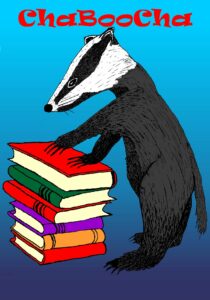
2 – Writers get to bring others (readers) into that world. By reading our stories, our readers get to live, temporarily, a different life, visit a different world, meet different people and see something completely separate from their own reality play out. And they get to do this all from the safety of their own homes.“A reader lives a thousand lives before he dies.
The man who never reads lives only one.” ~ George R.R. Martin
3 – A writer’s story can help a reader to learn empathy. Empathy is the ability to understand and share the feelings of someone else. I once read an article about a study done in 2013 that found that reading improves people’s ability to empathize, or to put themselves in the mind of another and feel what they might feel. Reading helps us to understand others, and, as writers, we help our readers by writing stories for them to read.
4 – Writers create entertainment for their readers, making ordinary lives more fun and exciting. Think about it: What are some ways that people have fun? You might answer things like going to the movies, watching TV, reading a book, or going to a play, but all of these common forms of entertainment involve writers. Movies, TV shows and plays all need script writers, and books require novelists. Even poetry readings require poets. As writers, we get to brighten people’s days with the stories we write.
5 – Writing is cathartic for writers. Angry at someone? Write about it. Create a character in your story to represent the person you are angry at and give them a really bad day. Or kill them off. As a writer, you can do whatever you want with your story. Sad about something? Write some poetry and pour your heart into it. Falling in love? Write a romance. There are so many ways to use your ability to write to help give your mind some peace.
6 – Writers get to use their very soul to bring light into the world they live in. Writing is a very personal thing for every writer. Our stories are a part of us; they come from us. They come from our hearts and our souls, our hard work, our imaginations, and because of this, a bit of the essence that makes us who we are seeps into the stories we create. Each story is unique, and it is unique in a way that is individual to each of us who write those stories. Writing means stringing out tiny bits of your soul onto the page for people to read. And that’s something that only writers are capable of doing.
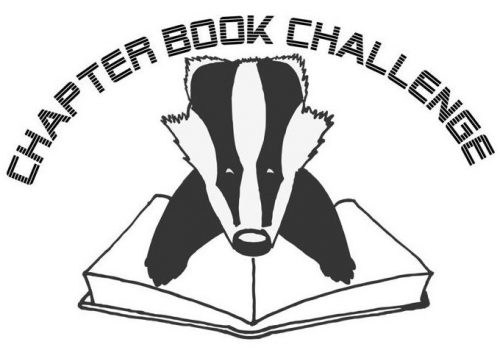
7 – Writers get to create something lasting to leave in the world, something that will exist even when they no longer do. When we write a story, it is something that becomes a part of the world we live in. It might never become a best-seller, but once it is written, it exists, and it is a part of us that we can leave behind for future generations to read.
*****
Rebecca Fyfe, an author with stories in several anthologies and collections, is a mother of seven children and, having lost over 145 lbs. of excess weight, blogs about health and anti-aging at Forever Young and fitness at Skinny Dreaming. Because of her love for reading, she graduated with a degree in English Literature. She also received an Associate degree in Child Development. She is a Californian who now resides in Great Britain. Rebecca created and runs the Chapter Book Challenge (ChaBooCha) which runs every March, and, when not writing short stories or children’s stories, she’s busy creating urban fantasy novels, full of her own special blend of magic. She gets her inspiration from her five daughters and two sons. She is the founder of Melusine Muse Press and its subdivision Your Kids’ Creations. You can find her on Facebook, Twitter and through her author blog.
-
Quick and Clean Tips from Nancy Vo
May 15, 2019 /Nancy is the former Illustration coordinator for the Canada West SCBWI (which is also my chapter). She did a wonderful time as Illustration coordinator and I loved how she brought us together during her tenure I’ve known Nancy for years and she always bring a magical energy to all the SCBWI meetings. I would like to say that Nancy is going to give us some quick and dirty tips today, but Nancy is far too clean for that.
- Make a book that you would like to read. Therefore, read a lot so that you can judge what is good and what is not so good.
- Leave room for the reader to draw conclusions, to have their own version of the story.
- Plus, what my late publisher, Sheila Barry said… no blunt instruments to deliver a message.
Follow Nancy:
Website: http://www.nancyvo.com/
Instagram: https://www.instagram.com/squeaknbanana/
Twitter: https://twitter.com/nvo_itsadraw
Nancy’s Books:
The Ranger
Groundwood Books
2019 August
-
Story Sparker Yvonne Mes
May 13, 2019 /I’ve known Yvonne Mes for several years now. We’ve done a blog hop together and she’s helped with Smart Dummies and supported my blog for years now. She’s also a fantastic writer and illustrator. She’s here to talk about her Story Sparkers. It’s a booklet you can use to generate your own story ideas!
Yvonne Mes’ Story Sparkers: https://www.yvonnemes.com/resources.html
 I love quirky writing exercises for story inspiration. And often have what started as a bit of fun and a way to loosen up, has resulted in solid story potential.
I love quirky writing exercises for story inspiration. And often have what started as a bit of fun and a way to loosen up, has resulted in solid story potential.I coordinate a children’s authors and illustrators writing group, Write Links, in Brisbane, Australia. At our last meeting, we used some of Rory’s Story Cubes (Voyages edition) as brain ‘activation’. The set consists of 9 cubes with a total of 54 icons. You roll the dice, start with ‘Once upon a time’ and link the icons together, weaving a story as you go.
Here is a video featuring children’s author Michael Rosen talking about the Story Cubes.
 Anyway, it was a bit of a last minute decision to use these cubes with my writer’s group and I had never used them before, but the group was up for it.So we collectively rolled three of the dice and followed it up with a 10-minute writing exercise, all of us using the same icons.Everyone came up with at least the start of a story, some of the group shared what they’d written and some decided they would like to continue the story at a later time.What I loved about Rory’s story cubes is that they are open to interpretation and give the freedom for your mind to wander.
Anyway, it was a bit of a last minute decision to use these cubes with my writer’s group and I had never used them before, but the group was up for it.So we collectively rolled three of the dice and followed it up with a 10-minute writing exercise, all of us using the same icons.Everyone came up with at least the start of a story, some of the group shared what they’d written and some decided they would like to continue the story at a later time.What I loved about Rory’s story cubes is that they are open to interpretation and give the freedom for your mind to wander.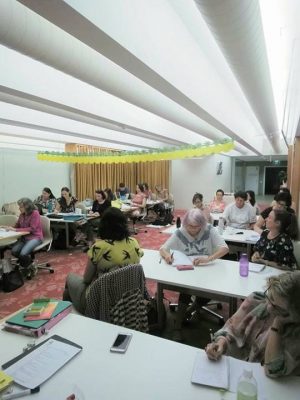 Dani’s Spring into Writing Challenge was just the push I needed to create my own set of dice, something I had been contemplating for a while. And as I write for children, I wanted my dice to relate specifically to writing stories for children.
Dani’s Spring into Writing Challenge was just the push I needed to create my own set of dice, something I had been contemplating for a while. And as I write for children, I wanted my dice to relate specifically to writing stories for children.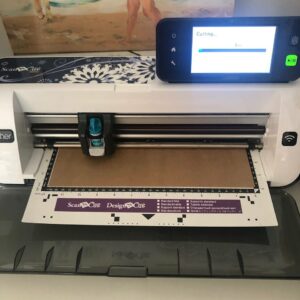
I have a Brother Scan-n-cut which made it easy for me design and cut the die templates. However, you can also trace or photocopy a template and cut them out with scissors. I have put together a booklet with instructions and a template which you can download from my website. And if you have a Brother Scan N Cut, let me know if you’d like to receive the FCM or SVG file (fits well on 12×12 inch card).
So, I sat down, tried not to overthink it and came up with a name ‘Story Sparkers’ and the following 16 dice:
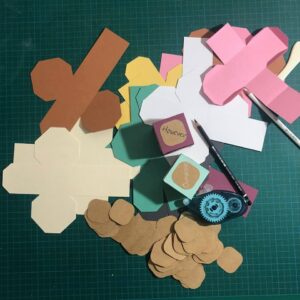
5 Story Element dice, with suggestions on:
- Story Structure
- Conflict
- Message
- Setting
- Objective
9 Character dice, of which
- 1 Character Type die
- 6 Character dice
- 2 Character Trait dice
2 Story Spark Plug dice
- Connectors
- Senses
(full descriptors can be found in the booklet)
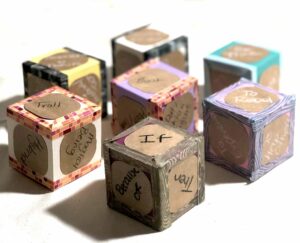
How to Create Your Story
Make the dice work for you, roll a couple or roll all of them. If you want some character inspiration, roll the character dice only. Or maybe you have characters but want some story inspiration, then use the story element dice instead.
Write as little or as much as you want. Write as short or as long as you want. If you like to write for older children or YA, or are looking for some edgier characters or alternative story elements, then create them yourself!
The spark plug dice give a little story motivation, by reminding you to focus on the senses and gives some ‘connecting’ words to keep the story rolling.
Character Dice
Roll the Character Type die to determine your type of character and then roll the corresponding
Character die (there are six of these) to determine your final character.
I would roll at least two characters, but you can choose as many as you like.The two Character Trait dice will give your characters a positive and/or negative trait.
Then came testing time!
For this exercise, I decided to go picture book all the way!
I gave myself a max 500-word count as well as being mindful of leaving room for illustrations.
Here is my roll …
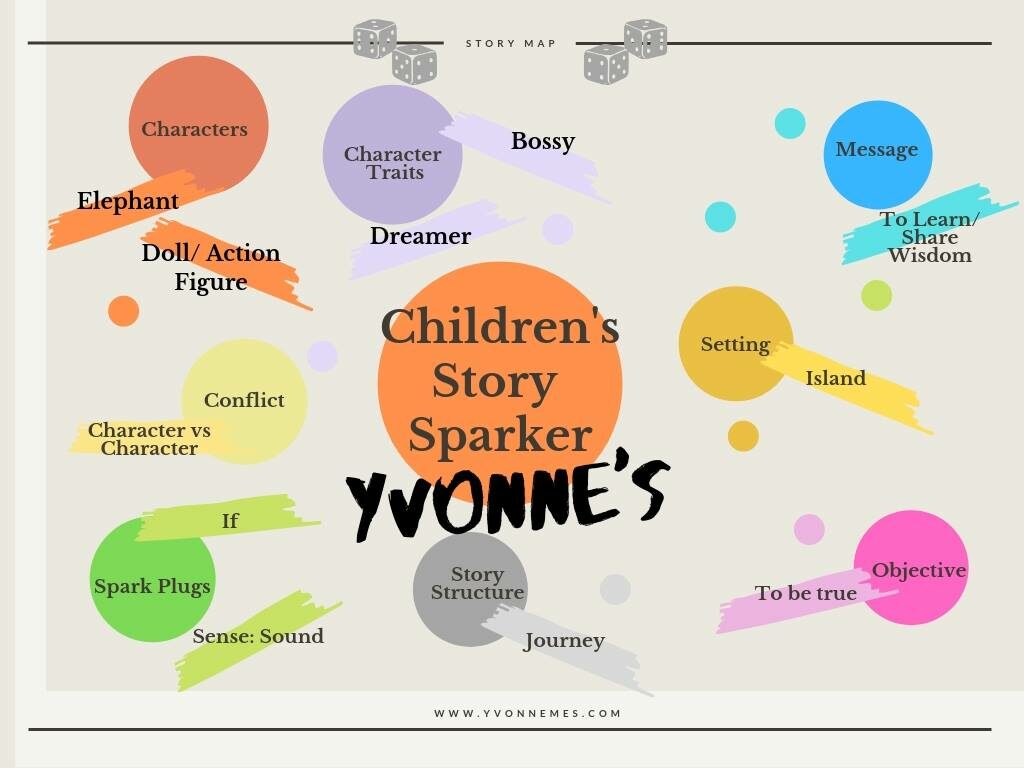
I have created this infographic to show where the dice fit.
First, I created a rough outline, it took all of 2 minutes because I didn’t allow myself to overthink it.Rough outline 1
During a storm the action hero figure had been blown overboard and drifted up on the island. The elephant was bathing in a river when it began to rain and storm and drifted out to open waters and onto the island.
The elephant is the dreamer, which makes him easily distracted and positive and will grow as a character by learning to focus when needed.The action figure is bossy, which makes him think he always knows best, but underneath he worries too much and needs to learn to trust/ be true to himself.
I liked the idea of them being on a journey together, a journey to find their way back, only to discover they are on an island.
I can see the action hero sitting on the elephant, bossily directing the way, with the Elephant getting distracted by his surroundings, a butterfly, a lake in the distant etc.
I wanted to start with action and introduce the two characters as succinctly as possible. It turned into a dialogue heavy free write:
Free write 1
Ooh, a butterfly!
Focus, Elephant, focus!
We have been going for days. You want to find your way back to the forest, don’t you?
I guess.
And I want to get back to … to …. saving the world!
Ah, a lake. Let’s sit here a while and have a drink.
No time to stop, we must keep going. Move!
Ah, these flowers remind me of the time when …
Then I got frustrated. I didn’t like my self-imposed rules. It felt like a longer story.
I decided to change the setting. I wanted a way for the characters to get together which meant I had to ditch my never-ending journey plot.
A Zoo or some sort of wildlife park perhaps, ah, and the action hero figure can fall into the elephant’s enclosure, forgotten by a child.
Because I also illustrate as well as write, I tend to visualize a lot of the action, which does tend to get confusing for other reading it without illustrations notes. In this case, they are notes to myself, to describe what I’d like to draw to go with the story.
Free Write 2 All day long Posie munched. (Elephant in Zoo enclosure munching or leaves and scrubs) All day long Alexander fought. (Hero action figure is shown fighting imaginary battles in the hands of a child.) But this particular day Posie munched something chewy. (The child is with family at the zoo, and while distracted drops his action hero figure down the elephant enclosure.) Hey, little man,’ Posie said, ‘you almost got stuck between my teeth.’ (Posie, the Elephant scoops the action hero figure out of the bush he had been entangled in.) I am Alexander the Great! I am not a little man, put me down.’ Sorry, little man. You looked a little stuck there next to the flowers. Where did you come from?’ It was an ambush.’ Ah, that explains why you were stuck in the bush!’ My troops and I were on our way to rescue the …. (looks around sees the lion enclosure) lions, when we were attacked by … (looks around sees the monkey enclosure) deranged monkeys.’ Poor little man, monkeys can be so loud. I remember them chittering away in the trees back home.’ No time for dreaming! Get me back up there!’ There is nothing there for you, little man. Stay with us for a little while.’ But there is nothing here!’ There isn’t?’ Posy looked around the enclosure. There really wasn’t a lot here now she thought of it. There is a whole world out there.’ There is?’ And it needs to be saved!’ And this is where I left it. I might take the story up again, let it rest and revise, or never look at it again. Though I do have a clear ending in mind with Alexander leading a parade of animals out of the zoo.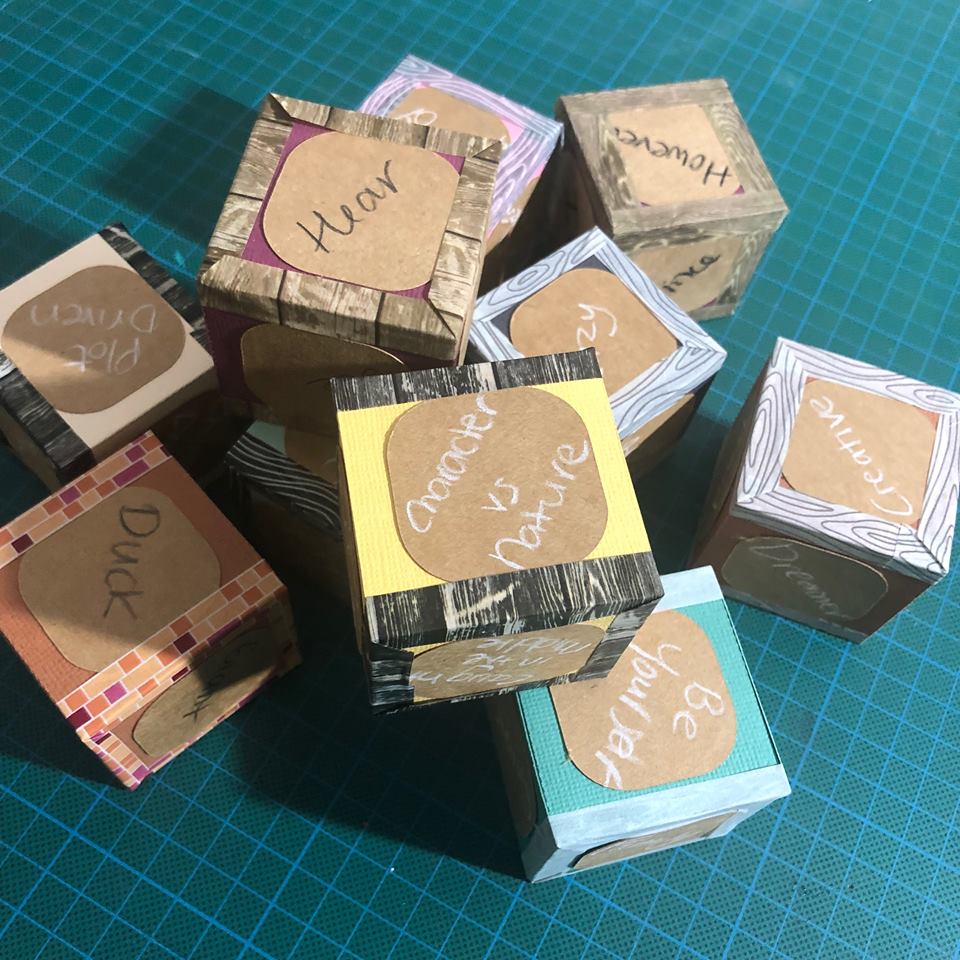
The result: I was happy with the cubes, I will test them further at my next writer’s meeting. If you’d like to make your own set of dice, you can download the booklet from my website. It includes a template, instructions and what to write on the dice. Here is my challenge to you. Buy some Story Cubes, use an app or online story generator and get writing. OR ask me roll the dice for you, just send me an email and I will reply with a roll of the dice. www.yvonnecmes@gmail.com In the end, I liked the puzzle of the story and the challenge on how to fit all the story pieces together and use words effectively. With these dice, I know there will be a story at the end of it, I just have to fit all the pieces together in the right way. And if you can’t wait to try it out, here is a roll for you to get started:

About Yvonne Mes
Yvonne Mes is an internationally published children’s book author and illustrator living in Australia. She has over twenty years’ experience as a former early childhood educator and teacher.
She has several picture books published as well as short stories in The School Magazine. Her story A Starry Christmas was animated and displayed on Brisbane City Hall for two weeks over Christmas in 2017.
Yvonne coordinates Write Links, Brisbane’s children’s writers and illustrators’ group and is vice-president of Book Links.
She is most in her element when writing, illustrating and making up and acting out stories with children during school visits and other workshops.Contact Yvonne at yvonnecmes@gmail.com

Follow Yvonne:
Website: https://www.yvonnemes.com
Story Sparkers: https://www.yvonnemes.com/resources.html
Yvonne’s No-Nonsense Critiques:
https://www.yvonnemes.com/critiques.html
Twitter: https://twitter.com/yvonnecmes
Instagram: https://www.instagram.com/yvonnecmes/
-
Look at the Week — May 12th – 18th
May 11, 2019 /This is a schedule of Events for Spring into Writing. If you haven’t signed up yet then go here: http://ngi.c96.myftpupload.com/register-for-the-writing-challenge/
—–
A Look at the Week May 12-18th:
Monday, May 13th: Yvonne Mes https://www.yvonnemes.com/
Wednesday, May 8th: Nancy Vo: http://www.nancyvo.com/
Friday, May 17th: Becky Fyfe http://chapterbookchallenge.blogspot.com/*
Saturday, May 11th: Look at the Week May 19th-25th.
* I just realized that I had listed Becky Fyfe instead of Nick Patton last week. This week is Becky and last was Nick. Sorry for the confusion! www.nickpatton.com
I wanted to do an online chat this week, but unfortunately no one voted on the poll. Whose fault is this? Mine! I put the poll in the wrong FB group. My critique partners were utterly confused. ^_^ I’m hoping to do this early next week! (Possibly Tuesday morning. I will let you know ASAP!) Facebook Group: https://www.facebook.com/groups/1117605075090170/
-
Nick Patton Inside the Box
May 10, 2019 /The Picturebooking Podcast, hosted by Nick Patton is arguably the best picture book podcast available today. Nick does a fantastic job finding wonderful guests to interview. He asks fun questions and it’s always neat to hear how he interacts with his guests. Nick is also an illustrator and creates beautiful art!
—–
Creative Paralysis meets Shoebox Dioramas
We’ve all been there, sitting in front of our screen, staring at the blinking cursor. Biding time until someone’s creative genius shows up.We know it’s going to be a while.So we wait.Wait, wait, wait. Blink, blink, blink.My recommendation when this happens is to check out this peep diorama. Isn’t it fun? It’s Peepkle, you know, like Beekle but with peeps!This shoebox diorama never had a blinking cursor. Why?Because it was half done before I started. It was a contest at Mead Public Library.
Isn’t it fun? It’s Peepkle, you know, like Beekle but with peeps!This shoebox diorama never had a blinking cursor. Why?Because it was half done before I started. It was a contest at Mead Public Library.My wife found the shoe boxes and bought the peeps. I spent five minutes thinking about my favorite picture book scenes before I stumbled upon Beekle. I pulled up an image from the book and sketched out the design.
Twenty-four hours later it was done.Why can’t writing or drawing or painting always be like that?Maybe it can.Maybe we can take some of what makes shoebox dioramas so fun and bring it into our other creative endeavors.With the shoebox, you are literally boxed-in in three directions. Let’s apply that to art and say that we need to limit some of the creative options.Box yourself in, but don’t close the lid. Giving yourself an opening to go wild inside a tight window.If you make quick decisions on your walls you’ll be half done before you start and that blinking cursor will be moving right.Dr. Seuss gave himself walls when he challenged himself to create a story, GREEN EGGS AND HAM, using only 50 words.Chris Van Allsburg gave himself walls when he eliminated the use of color in his JUMANJI illustrations.What if you give yourself the wall of not creating a story, but exploring a character or a world?Or what if your walls were telling the story with just dialog?Defining what your project is not, can free yourself up to discover what your project is.I hope my shoebox diorama helps you the next time creative paralysis enters your world. For more creative inspiration to make better stories listen and subscribe to the Picturebooking Podcast.—–Follow Nick:
Podcast: http://picturebooking.libsyn.com/
Patreon: https://www.patreon.com/picturebooking
Twitter: https://twitter.com/nickpattonillo
Portfolio: http://nickpatton.com

-
Three Tips From Melissa Stoller Plus Prizes!
May 8, 2019 /I was very lucky to learn more about Melissa Stoller when I took the Children’s Book Academy’s “The Craft and Business of Illustrating Picture Books”. Melissa was one of the assistants in the course and she helped me out so much! I am so excited about her books and hope to read Scarlet’s Magic Paintbrush soon!
Check out Melissa’s website to find out more: www.MelissaStoller.com
Thanks for inviting me to be a guest blogger for this writing challenge, Dani!
Today, I’m offering some writing magic motivation for this month and into the future. Here are three tips to help bring some spellbinding creativity into your writing world:
1) CHASE IDEAS
Find captivating ideas wherever you are: in your neighborhood, at the library, from your family, in photos you take, from your pet, through the news, and in nature. Eavesdrop on conversations. And remember to take notes! Ideas are everywhere – find ways to chase and embrace them.
2) READ EVERY DAY
Go to the bookstore or library and choose five books to read in a variety of genres. Then choose five more. The more you read the more you will be inspired with fascinating ideas and charming language and imagery.
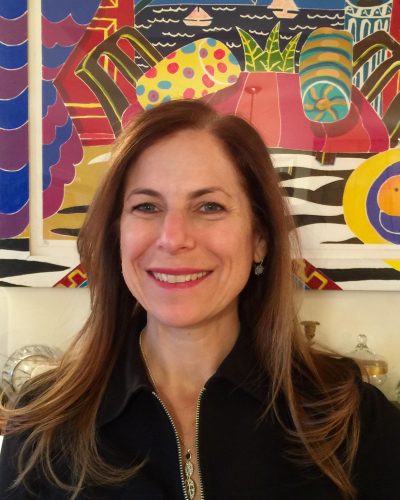
3) START WRITING
When you feel ready, or even if you don’t quite yet, just write.
Here are a few prompts to get you started:
a. Visual prompt: choose an illustration, photo, or video and write a story surrounding that image.
b. Emotion prompt: think about a time when you were happy, sad, surprised, disappointed, or angry. Write a scene featuring that emotion.
c. Note cards prompt: write down ten types of characters, ten objects, and ten situations (such as a ghost, a magic wand, and getting lost). Pick one card from each pile and write a story using those words.
I hope these tips help you bring the magic each time you write. And as I write, when I personalize my chapter books, “May all your adventures be enchanting.”
—–
MELISSA’S BIO:
Melissa Stoller is the author of the chapter book series The Enchanted Snow Globe Collection – Book One: Return to Coney Island and Book Two: The Liberty Bell Train Ride (Clear Fork Publishing, 2017 and 2019); and the picture books Scarlet’s Magic Paintbrush and Ready, Set, GOrilla! (Clear Fork, 2018). Upcoming releases include Return of the Magic Paintbrush and Sadie’s Shabbat Stories (Clear Fork, 2019). She is also the co-author of The Parent-Child Book Club: Connecting With Your Kids Through Reading (HorizonLine Publishing, 2009). Melissa is an Assistant and Blogger for the Children’s Book Academy, a Regional Ambassador for The Chapter Book Challenge, a Moderator for The Debut Picture Book Study Group, and a volunteer with the Society of Children’s Book Writers and Illustrators/MetroNY. In other chapters of her life, she has worked as a lawyer, legal writing instructor, freelance writer and editor, and early childhood educator. Melissa lives in New York City with her husband, three daughters, and one magical puppy.
Follow Melissa:
Webpage: www.MelissaStoller.com
Facebook: http://www.facebook.com/MelissaStoller
Twitter: http://www.twitter.com/melissastoller
PRIZE @%@%@%@%@%
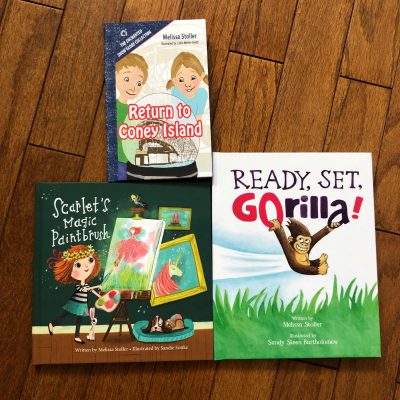
3 winners will win one of these books in the picture by Melissa Stoller!
The books are:
The Enchanted Snow Globe
The Magic Paintbrush
and Ready, Set, Gorilla!
Please comment below if you want to win one of these prizes! The winner will be chosen from the list of people below.
